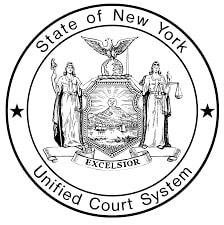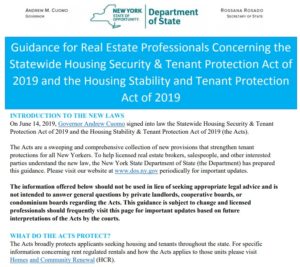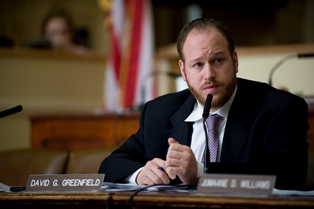Advocates and industry leaders calling for more protections and more action from Governor. On May 7, 2020, New York Governor Andrew Cuomo issued Executive Order No. 202.28, extending the eviction moratorium through August 20, 2020. The moratorium prevents the filing of eviction proceedings against both residential and commercial tenants. The original eviction moratorium, came by way of Chief Administrative Judge Lawrence K. Marks on March 15, 2020, and was reinforced by Governor Cuomo’s Executive … <Read More>
REBNY
Chief Administrative Judge Issues Statewide Moratorium on Eviction Proceedings in Wake of Corona Crisis
REBNY, Legal Aid and all parties united against evictions during Corona outbreak. On March 15, 2020, the New York State Court System issued an indefinite moratorium on eviction proceedings, effectively allowing many people and families throughout the state to stay in their homes and off the streets or in shelters. Tenant advocates and numerous elected officials argued housing insecurity and homelessness will only exacerbate the COVID-19 threat. The proceedings which a New York City … <Read More>
REBNY Challenges Department of State’s Memo Prohibiting Broker’s Fees
Real estate community in state of confusion over 2019 Rent laws. On February 10, 2020, the Real Estate Board of New York Inc. (“REBNY’”), the New York State Associations of Realtors (“NYSAR”) and a host of residential real estate brokerages were granted a temporary restraining order, blocking the New York State Department of State’s guidance on broker commissions. The TRO comes in conjunction with their Article 78 filing seeking to invalidate the memorandum’s entire section … <Read More>
City Council Passes Legislation Enhancing HPD’s Ability to Recoup Relocation Expenses
Intro 30-A gives HPD liens a stronger position. On August 14, 2019, City Council passed Intro 30-A providing that the City’s Department of Housing Preservation and Development’s (“HPD”) orders to vacate the premises, and the subsequent costs to relocate the displaced tenant would now be considered high status tax liens on the property. The law is intended to discourage the negligence of building owners and give HPD an ability to recover relocation expenses of those … <Read More>
Council Votes to Alter Landmarks Law by Establishing Timelines for Designation
Peter Koo and David Greenfield-sponsored bill was supported by Real Estate industry and vehemently opposed by preservationists. On June 8, 2016, the full City Council voted to approve a bill amending the City’s Landmark Law following a Land Use Committee meeting on June 7.
The legislation, Introduction 775, mandates that Landmarks vote on an item for designation as an individual, interior, or scenic landmark within one year of holding a public hearing. If … <Read More>
Extension to Mount Morris Park Historic District Designated
Commission decided to retain boundaries as originally presented, after considering questions raised at July hearing. On September 22 2015, the Landmarks Preservation Commission voted to designate the Mount Morris Park Historic District Extension, composed of the 276 properties on six blocks. The new district adjoins and shares a development history with the existing Mount Morris Park Historic District, designated in 1971.






